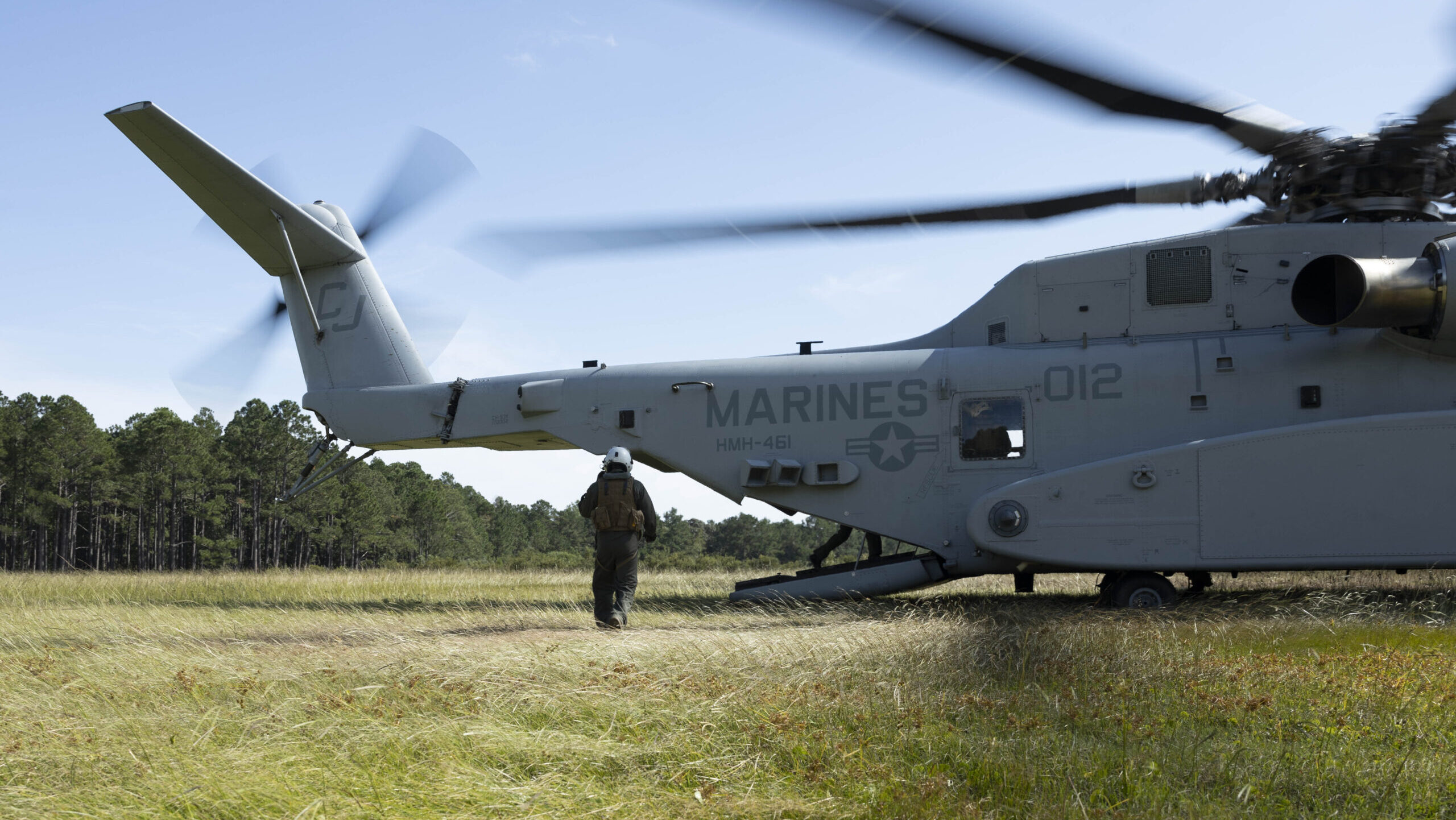World
Marine Corps 250th Anniversary: Transforming the 2nd Marine Air Wing

As the United States Marine Corps celebrates its 250th anniversary this week, the focus turns to units that exemplify the Corps’ dedication to innovation and adaptability. Among these is the 2nd Marine Air Wing (2nd MAW), which has undergone significant transformation in recent years, reflecting a broader shift within the military.
The 2nd Marine Air Wing has evolved from a counterinsurgency force into a technologically advanced aviation unit prepared for distributed maritime operations. This change, noted by defense expert Robbin Laird, was first observed during his visit in 2007 aboard the HMS Invincible, where he flew in on an MV-22 Osprey. Laird has since documented the significant developments at the Wing’s bases in Cherry Point and New River in North Carolina, as well as Beaufort in South Carolina.
The transformation of the 2nd MAW is driven by a commitment to rethinking traditional military assumptions. The focus has shifted from the deserts of Iraq and Afghanistan to contested environments in the High North, necessitating new strategies for logistics, mobility, and survivability. Central to this shift are four key platforms that redefine operational capabilities.
The MV-22 Osprey has redefined assault support with its unique combination of helicopter versatility and fixed-wing speed. This aircraft has enabled the development of new operational concepts, such as the Special Purpose Marine Air-Ground Task Force (MAGTF) and distributed operations that span vast distances, which would not have been feasible with conventional helicopters.
The F-35 Lightning II enhances battlefield effectiveness through its role as a network-enabled sensor platform, providing critical situational awareness to joint and allied forces. Alongside this, the CH-53K King Stallion represents a significant advancement in heavy-lift capabilities, offering improved performance and maintainability due to its digitally native design. Finally, the KC-130J Super Hercules serves as a vital support aircraft, enabling aerial refueling and fire support through its innovative Harvest Hawk system.
New Concepts for Modern Warfare
The integration of these platforms requires a reevaluation of operational concepts, including Expeditionary Advanced Base Operations (EABO) and Distributed Aviation Operations (DAO). These concepts demand agile and mobile support structures, reshaping traditional roles within aviation ground support and command and control units.
Significantly, the most transformative changes are occurring not just in the cockpits of advanced aircraft, but also in maintenance bays, logistics chains, and the minds of young Marines. Lt. Gen. William Swan, the former commanding general of 2nd MAW and current Deputy Commandant of Aviation, emphasized this approach through his “more cowbell” philosophy. This initiative involved giving cowbells to Marines who devised creative solutions to ongoing challenges, underscoring the importance of grassroots innovation in military operations.
“The Marines want to do a great job, and they want to be better,” Swan stated. “They want to win.” This sentiment reflects a broader shift in military culture toward empowering junior personnel to tackle problems and make decisions autonomously rather than waiting for direction from higher command.
In the face of peer adversaries, this cognitive agility becomes a crucial advantage. Throughout this decade of transformation, one guiding principle has remained consistent: everything exists to support the Marine on the ground. Every technological advancement and tactical innovation is designed to enhance the effectiveness and survivability of Marines in the field.
A Legacy of Innovation
The ongoing evolution of the 2nd Marine Air Wing illustrates a commitment to redefining what readiness means for the nation. Marines are continually adapting legacy platforms like the Viper helicopter while mastering new systems. They are transforming support aircraft into combat multipliers and heavy-lift helicopters into precision instruments.
This approach to defense transformation focuses not on disruption for its own sake but on integrating new technology and techniques into practical operational concepts. Laird’s observations highlight the 2nd MAW as a living laboratory where innovation meets operational necessity, with individual Marines driving the transformation of new platforms into effective warfighting capabilities.
To honor the dedication and resilience of the Marines he has encountered, Laird has documented these efforts in his book, 2nd Marine Air Wing: Transitioning the Fight Tonight Force, available on Amazon. This work aims to bring the stories of Marines to a broader audience, showcasing their commitment to excellence and relentless innovation.
As the Marine Corps marks this significant milestone, the evolution of the 2nd Marine Air Wing stands as a testament to the enduring legacy of the Corps and its unwavering dedication to adapting to the challenges of modern warfare.
-

 Lifestyle4 months ago
Lifestyle4 months agoLibraries Challenge Rising E-Book Costs Amid Growing Demand
-

 Sports3 months ago
Sports3 months agoTyreek Hill Responds to Tua Tagovailoa’s Comments on Team Dynamics
-

 Sports4 months ago
Sports4 months agoLiverpool Secures Agreement to Sign Young Striker Will Wright
-

 Lifestyle4 months ago
Lifestyle4 months agoSave Your Split Tomatoes: Expert Tips for Gardeners
-

 Lifestyle4 months ago
Lifestyle4 months agoPrincess Beatrice’s Daughter Athena Joins Siblings at London Parade
-

 World3 months ago
World3 months agoWinter Storms Lash New South Wales with Snow, Flood Risks
-

 Science4 months ago
Science4 months agoTrump Administration Moves to Repeal Key Climate Regulation
-

 Science3 months ago
Science3 months agoSan Francisco Hosts Unique Contest to Identify “Performative Males”
-

 Business4 months ago
Business4 months agoSoFi Technologies Shares Slip 2% Following Insider Stock Sale
-

 Science4 months ago
Science4 months agoNew Tool Reveals Link Between Horse Coat Condition and Parasites
-

 Sports4 months ago
Sports4 months agoElon Musk Sculpture Travels From Utah to Yosemite National Park
-

 Science4 months ago
Science4 months agoNew Study Confirms Humans Transported Stonehenge Bluestones









